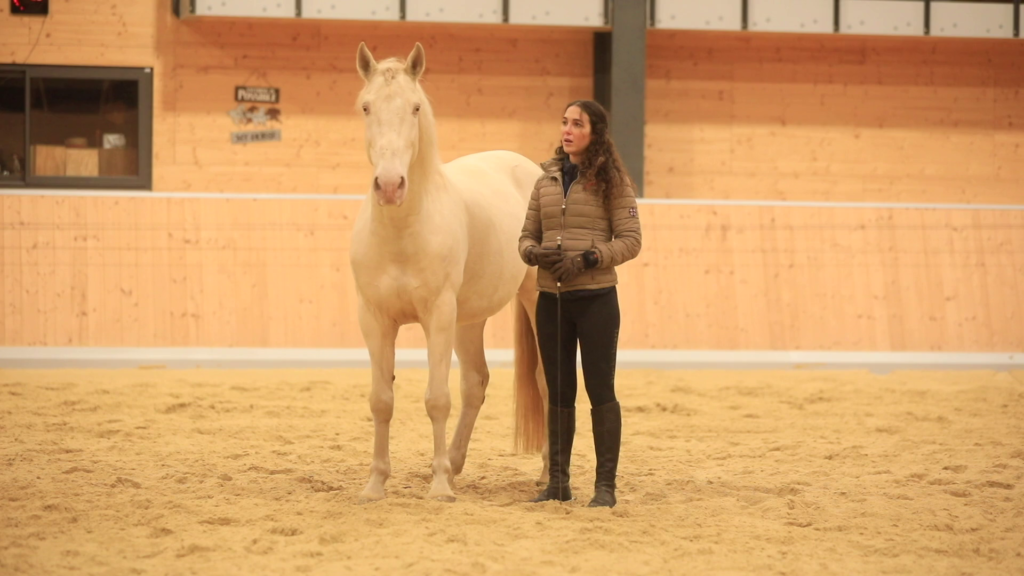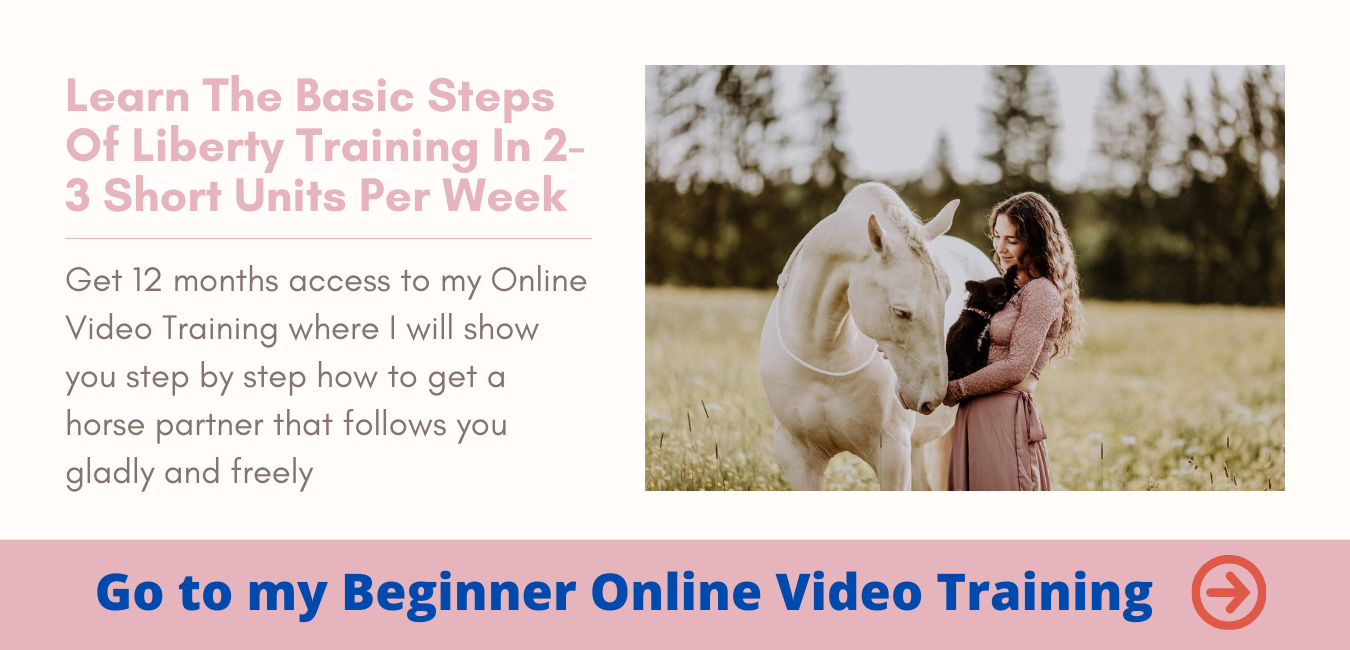Have you ever thought about what liberty training means for you and your horse: playing with energy? Listening and harmonising with each other. Fast and slow steps – like in a dance.
But do you consciously control your energy?
Especially if you have a very spirited horse (like Attila or Fideo), it is important to really read your horse and learn when you are sending out “too much” energy and pushing your horse too much – so that he gallops away bucking, for example.
Imagine your dance together like a glass.
Your task is to ensure that the glass is neither too full nor too empty – you must always keep it in balance.
If your “energy glass” becomes too full, you spill some of the precious energy, you can no longer control and direct it and you lose the mental connection to your horse.
If, on the other hand, your glass becomes too empty, your horse may not even join your dance together – because he lacks energy and motivation to “dance around you” with full expression.
I think you knew before that liberty dressage is not “easy” and that you have to learn to communicate with your horse, to understand him and to judge him correctly.
But did you also realise that the energy you put into or take out of your glass really determines the ease and connection you can build with your horse?
So at the beginning of your training session, take a good look inside yourself.
How much body tension do you have? What is the “normal state” to which your horse has already become accustomed? How high is your “muscle tone”, i.e. the degree of tension in your individual body parts?
Only when you know the “normal condition” of a horse that you have known for a long time, will you know which tension or relaxation of your body provides more or less energy.
With a horse that you are getting to know for the first time, it is your task to carefully find out what this particular horse perceives as the “0-point”. It depends on the horse how much energy it can handle before it has to convert this energy into movement or it loses concentration.
In the same way, even when training a cold-blooded horse, you will usually have to “give off” more energy to get it “going” than with a thoroughbred.
This requires a bit of tact – by the way, something I find extremely fascinating in training with horses ?
So how do you start?
Depending on the level at which you are already training in free dressage, you can start with the lead or the circle for a first test.
Now test how much body tension and energy you need to motivate your horse to go.
Is it enough to stand up, breathe in and lean your upper body slightly forward?
Or do you have to point forward with your hand?
Or even tug on the rope before he starts to move?
Remember: Our goal is always as much as necessary, but as little as possible.
However, if you have a horse that is rather “dull” and lacking in energy, you are allowed to “wake him up” after a gentle request and give a lot of energy to the movement.
Because if you keep repeating gentle impulses and only slowly increase the intensity, you will dull your horse over time rather than make him more refined.
Now test at a walk how much straightening and body tension you need to send your horse further away from you when leading or circling.
To do this, make yourself tall, gather your energy and send your horse a greater distance. If he doesn’t react, you can also take a step towards him, especially in the beginning, and move the crop towards his shoulder as a signal stick to drive him to a more distant line.
Horses actually react very well to energy, some have just become a bit “ignorant” because we humans are often not aware of our energy and horses have had to learn to deal with it.
It gets exciting when you want to bring your horse to a trot or canter next to you.
For many horses it is very difficult to “ramp up” their energy next to the human and at the same time stay concentrated and pay attention to the human.
It is not uncommon for the canter to be the biggest challenge in free work – after all, it involves a lot of energy, a lot of strength and coordination for the horse and a strong connection, which should ensure that the horse does not make it “easier” for himself by drifting off to a greater distance, but stays with you.
To do this, I bring more energy into my body by trotting or cantering on the spot itself (in the end, only a single, almost invisible step in connection with the voice signal is enough) to get my horse to move faster with me.
If I am too forceful, if I have not prepared my horse well enough for the task or if he is distracted at that moment, then I quickly find myself standing alone and looking only at my horse’s cloud of dust.
If, on the other hand, I don’t push my horse enough for his circumstances, he won’t start, but will at best keep the current pace. You often see this phenomenon when leading, when people try to pull their horses along instead of waking them up with their body energy.
By the way, it is never a good idea to stare at your horse when leading or circling.
This will always unsettle your horse – and depending on where you are looking, brake or drive him. With sensitive horses you can visually “close the door” on the circle not only by turning your shoulder, but also by looking in the direction your horse is going.
If you look at the hindquarters instead, you can drive your horse.
However, if you look at your horse while leading, even fix it with your gaze, it will always have the tendency to give way in front of you instead of coming to you and picking up speed.
Because “giving more of your own energy” in communication with a horse is much more difficult than taking yourself back a little. At least that’s how I feel when working with my horses – but because of my weakness for Spanish horses, I tend to have horses that already have a lot of “basic energy” and therefore have to be slowed down a bit.
Because it’s not only the work with your energy that wakes up your horse, but of course also strategic action and as always: timing, timing, timing!
[su_youtube url=”https://youtu.be/1GZiZa11vJI”]
But no matter what you are training your horse to do:
The most important thing is that you never try to change your horse’s nature. Try to change yourself. Become a good trainer for your horse, who can respond to his character and his daily form.
On the one hand, this is the greatest challenge, but also the greatest gift!
Because as soon as you realise that by changing yourself, you can change your horse’s reactions, there are actually no more limits for you and your partnership!
Together you can achieve anything – you just have to keep reminding yourself that self-reflection, time and patience are the most important ingredients in your training ?
On that note, have fun testing your energy and fine tuning your communication!
All the love,
Your Kenzie




